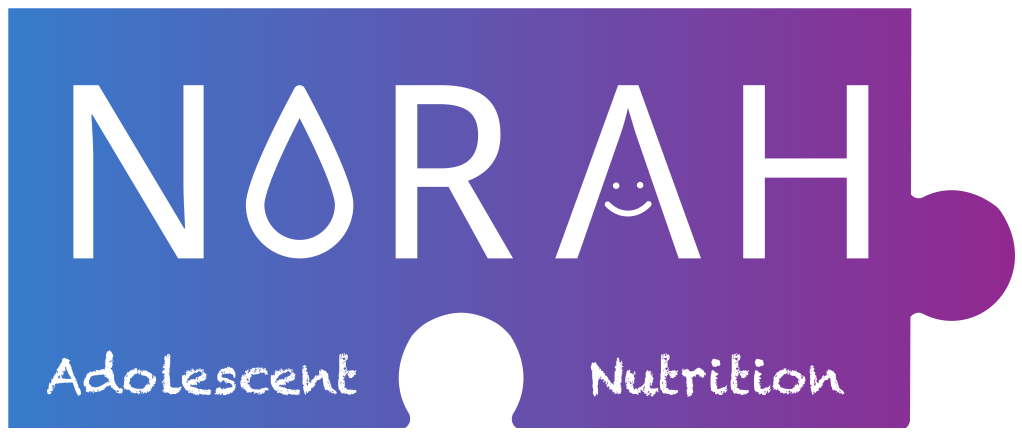The Vanden Brink research program intersects nutrition, metabolism, and reproductive physiology and is guided by the overarching aim: to detect, understand, and prevent the integrative mechanisms responsible for aberrant reproductive development during the adolescent reproductive transition. Our research focuses on the black box surrounding these peri-menarcheal years with the goal of precisely defining divergences in reproductive axis calibration and the nutritional and intermediary metabolic mechanisms that underlie abnormal trajectories in female reproductive development leading to conditions such as Polycystic Ovary Syndrome (PCOS).
Current Studies
Nutrition for Optimal Reproductive and Adolescent Health (NORAH)
In NORAH, we are building upon our findings from OMG! (see below) to better understand the relationship between diet, the food environment, and emerging PCOS among adolescents. NORAH is funded by a Collaborative Seed Grant sponsored by the Global Institute for Hispanic Health and is being conducted at two sites across Texas: Driscoll Children’s Hospital (Corpus Christi, TX) and at Texas A&M University (College Station, TX).

Menstrual Diary App Study
Although there are multiple mobile menstrual tracking applications available, they have several limitations that affect our ability to collect unbiased menstrual data in teens. We are developing an app to bypass these concerns which enables increased data integrity, data security, and participant privacy. We are currently testing our menstrual diary app to assess engagement, functionality, content and design acceptability, identify any technical issues, and receive feedback from adolescents and adults to optimize its applicability and research functionality before implementation in some of our upcoming studies.

CodeRED
The adolescent reproductive transition represents a pivotal juncture in human development. Although some adolescents struggle with menstruation and its physical and psychological sequelae, many do not. The Vanden Brink Lab represents one of four research teams across three institutions working together to conduct CodeRED, which is currently funded by the Weill Cornell-Cornell Multi-Investigator Seed Grant. Our goal is to understand discrepancies in reproductive and psychological health, when and why they manifest, and what can be done to prevent them.

Completed Studies
Ovarian Morphology in Girls (OMG!)
Establishment of regular menstrual cycles is a key component of reproductive maturation and a recognized vital sign for health and well-being. Irregular menstrual cycles are especially common for the first 2-3 years after an adolescent’s first menstrual period (i.e., menarche), which delays the identification and diagnosis of early reproductive perturbations and subsequent future disease risk. The main objectives of this NIH-funded study, led by Dr. Marla Lujan from Cornell University and in collaboration with Dr. Tania Burgert and Dr. Romina Barral (Children’s Mercy Kansas City), are to determine whether there are distinct aspects of ovarian morphology that predict the likelihood of regular menses or cycle irregularity at 2 years post-menarche and whether ovarian features predict PCOS symptomology. Dr. Vanden Brink conducted an ancillary study alongside OMG! to also study the changes in dietary intake and the environment that also occur along this trajectory towards or away from eumenorrhea. Dr. Vanden Brink also received a postdoctoral fellowship Canadian Institutes of Health Research to support her role and collection of data on the primary and ancillary studies.

Ovarian Morphology in Girls (OMG!) – MRI
Ultrasound imaging used to visualize ovarian features provides diagnostic insight into reproductive disorders such as PCOS but also provides insight into degree of reproductive dysfunction and metabolic disturbance in adults. The standard ultrasound imaging modality during adolescence is transabdominal ultrasound (TAUS) imaging, but presents multiple limitations. This study aims to conduct a systematic evaluation of the utility of magnetic resonance imaging (MRI) in contrast with TAUS to adequately define the best methods to visualize ovarian features and clarify the importance of ovarian morphology during the adolescent reproductive transition. The Vanden Brink Lab is working collaboratively with the Lujan Lab at Cornell University and the study was funded by the Cornell Magnetic Resonance Imaging (MRI) Facility Pilot Award.
